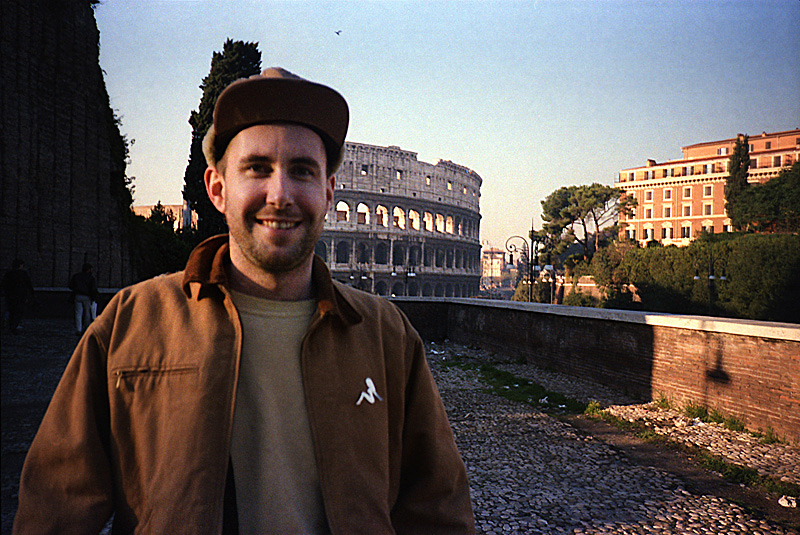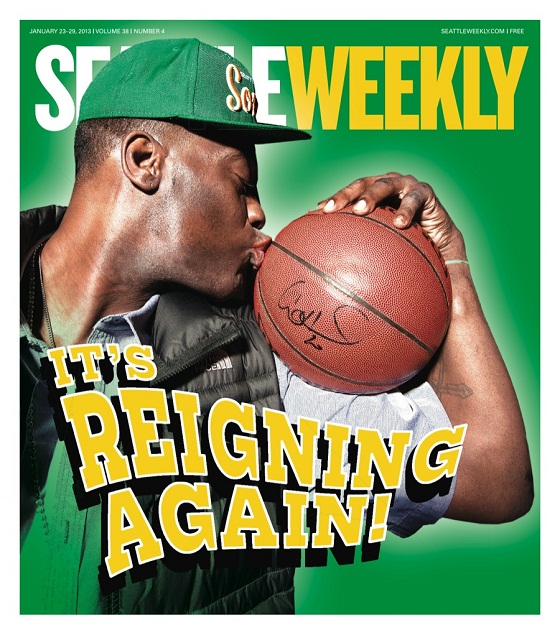Over coffee at Capitol Hill’s Cafe Presse, Bruce Pavitt is beaming about a triumphant recent DJ gig.”I raged it at the senior center,” he says, “and a bunch of 80-year-olds danced to my set.”The co-founder of Sub Pop Records and author of the recent eBook Experiencing Nirvana, Pavitt lives a self-described hermit’s lifestyle on Orcas Island, but it’s not one of quiet solitude. He and his wife have three teenagers between the two of them, and he’s become a go-to party-starter thanks to his high-quality sound system, deep catalog, and willingness to take just about any gig. When the local senior center ordered up a big-band set, he obliged with some Ella Fitzgerald, Duke Ellington, and Frank Sinatra.”I broke out of the ‘Indie is cool’ ghetto a long time ago,” he says. “I’m a musical omnivore, and I feel like I could literally go into any social situation and rock the house.”He’s so confident, in fact, that he claims to have found a handful of songs that are guaranteed to fill the dance floor, regardless of the audience. “It doesn’t even matter how old they are,” says Pavitt, who long ago relinquished day-to-day duties with the seminal Seattle record label. “They could be 8 or 80. There are certain key popular songs where you know if you drop it, everybody will get on the floor no matter what. And I’m not going to mention those songs ’cause that’s my trade secret.”That said, he lets one slip: Carly Rae Jepsen’s inescapable “Call Me Maybe.””Back when I was younger and I was more into punk culture, it was all about defining myself against popular culture,” he says. “But then you get to a certain age where you’re like, the real power of music is bringing people together. And when you’re DJing a set, you get to see that firsthand, because the whole goal is trying to get as many people on the dance floor as possible.”Experiencing Nirvana features Pavitt’s memories and photos from the eight days he spent with a road-weary Nirvana in Europe in 1989, five months after the band had released its Sub Pop debut, Bleach. In dozens of previously unseen photos, Pavitt captures a young, virtually unheard-of band onstage—but also sightseeing and loading its gear into vans, with little hint of the mania that lay ahead.That long week culminated in LameFest UK, a Sub Pop showcase that featured the band alongside Mudhoney and Tad at London’s Astoria Theater, a show that drew rave reviews for Nirvana—the New Musical Express proclaimed them to be “Sub Pop’s answer to the Beatles”—and the label. According to Keith Cameron, a British music journalist who attended the show and wrote the foreword for the book, it helped boost the label’s profile “as an identifiable signifier of a specific strand of rock music.””My lens is, really, let’s examine the life of these groups prior to Nevermind, prior to when all the corporate money came into it,” Pavitt says of Experiencing Nirvana. “What you’re seeing is the network of hobbyists who’re creating art because that’s what they’re passionate about, not about cutting a business deal. Post-Nevermind, every band I talked to was all about the deal, all about getting the attorney and getting the killer deal. The culture completely changed, almost overnight. So to go back and review what it was like before bands knew that there was no chance, ever, that you’d blow up and have a huge career—it’d be, like, one in a million—I think it’s a really inspiring period in cultural history.”So has Sub Pop—which celebrates its 25th anniversary this summer and includes hip-hop, punk, and folk-rock artists on its roster—maintained a unique, identifiable sonic fingerprint? To this end, Pavitt points to the label’s scrappy imprint Hardly Art, which is home to a stable of lo-fi garage rockers with psychedelic tendencies.”To me, Hardly Art is a network of hobbyists, and when you’re a network of hobbyists it’s not about making money, it’s just doing crazy stuff,” he says. “That draws me in. I think a lot of the material on Sub Pop is very good, and I’m really impressed with and amazed at how they can break artists, and I think they put out some of the best music of the 20th century as far as rock and pop music goes. But I have a real soft spot for Hardly Art right now because of that sense of whim.”ckornelis@seattleweekly.com
Over coffee at Capitol Hill’s Cafe Presse, Bruce Pavitt is beaming about









